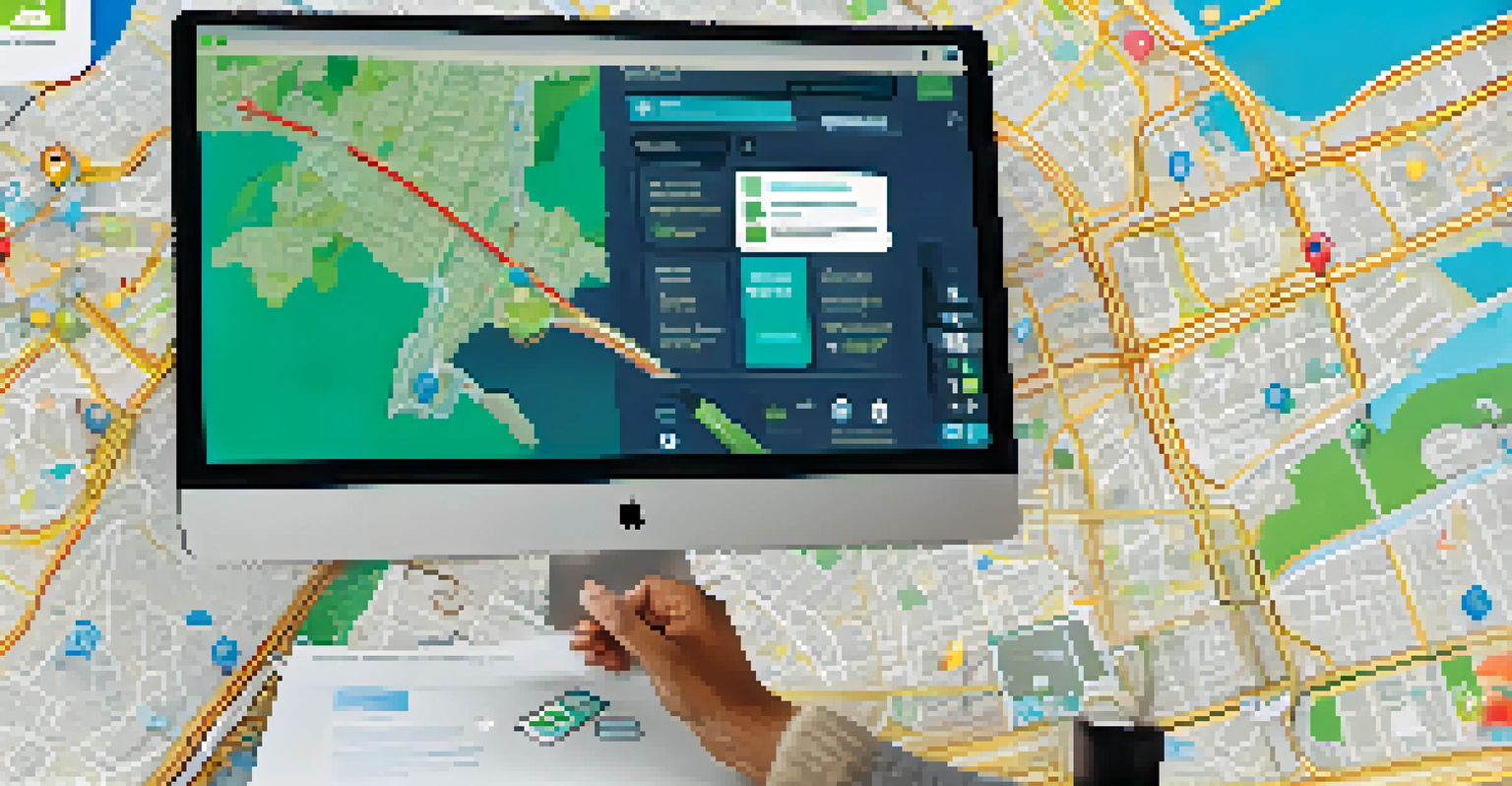Public Participation in Portland's Urban Planning Process

Understanding the Role of Public Participation in Urban Planning
Public participation is a vital part of urban planning, especially in Portland. It allows community members to voice their opinions and influence decisions that affect their lives and environment. This democratic process ensures that urban development reflects the needs and desires of the people.
Public participation is essential to the success of urban planning; it bridges the gap between the community and decision-makers.
In Portland, public participation means more than just attending a meeting. It encompasses a variety of methods, including surveys, workshops, and online forums, aimed at reaching as many residents as possible. The goal is to create an inclusive atmosphere where everyone feels heard and valued.
Ultimately, effective public participation can lead to more sustainable and equitable urban planning outcomes. By integrating diverse perspectives, planners can create spaces that truly serve the community and enhance the quality of life for all.
Key Methods for Engaging the Public in Portland
Portland employs various methods to engage its citizens in urban planning processes. Community workshops are a popular approach, where residents can gather to discuss their views and brainstorm solutions together. These interactive sessions foster a sense of community and collaboration.

Another effective method is the use of online platforms, which allow residents to share their thoughts conveniently from home. Tools like surveys and discussion forums make it easier for people to participate, especially those with busy schedules or mobility challenges. This digital engagement complements traditional methods.
Public Participation Enhances Planning
Engaging community members in urban planning ensures development reflects their needs and desires.
Additionally, Portland often utilizes social media to reach a broader audience. By sharing updates and inviting feedback online, the city taps into the everyday conversations happening in the community, making it easier for residents to stay informed and engaged.
The Importance of Inclusivity in Public Planning
Inclusivity is a cornerstone of effective public participation in urban planning. Portland strives to involve diverse voices, ensuring that marginalized communities are represented. By doing so, the planning process becomes richer and more reflective of the city's true demographic.
A city is not just a collection of buildings; it’s a place where people come together to share experiences and shape their futures.
To enhance inclusivity, the city actively seeks feedback from underrepresented groups through targeted outreach efforts. This might include hosting events in neighborhoods that traditionally have lower participation rates or providing materials in multiple languages. Such initiatives help break down barriers to involvement.
When everyone can contribute to the planning process, the resulting urban environment is more likely to meet the needs of all residents. This inclusivity not only strengthens community ties but also leads to better decision-making and more successful urban developments.
Challenges in Public Participation Efforts
Despite its many benefits, public participation in urban planning does face challenges. One major issue is the often low turnout at community meetings, which can result in a limited range of perspectives being considered. This can lead to plans that do not fully represent the community's interests.
Another challenge is the varying levels of understanding and engagement among residents. Some individuals may feel intimidated by the planning process or unsure of how to contribute effectively. It’s essential for the city to provide support and resources to help everyone navigate this complex landscape.
Inclusivity is Essential for Success
Involving diverse voices, especially from marginalized communities, leads to richer and more effective planning outcomes.
Finally, balancing the input from the public with the technical realities of urban planning can be tricky. Planners must navigate the fine line between community desires and regulatory constraints, ensuring that the final plans are both practical and reflective of public input.
Case Studies: Successful Public Participation in Action
Portland has several notable examples of successful public participation in urban planning. One such instance is the development of the city's bike lane network. Through extensive community outreach and feedback, Portland was able to create a system that serves cyclists effectively while considering the needs of all road users.
Another example is the South Waterfront development project, which involved residents from the very beginning. Workshops and design charrettes allowed the community to shape the vision for this area, resulting in a vibrant, mixed-use neighborhood that reflects local input.
These case studies highlight the potential of public participation to produce plans that resonate with residents. They demonstrate how engaging the community can lead to innovative solutions and successful urban spaces that enhance the overall quality of life.
The Role of Technology in Enhancing Participation
Technology plays a significant role in enhancing public participation in Portland's urban planning processes. Online platforms and mobile apps enable residents to engage with planning initiatives at their convenience, making it easier for them to provide feedback and stay informed. This shift towards digital engagement has broadened the reach of public participation efforts.
Moreover, technology allows for more interactive and visually appealing presentations of planning concepts. Interactive maps and 3D visualizations help residents better understand proposed changes, making discussions more engaging and productive. This visual element can spark more in-depth conversations and feedback.
Technology Boosts Engagement Efforts
Utilizing online platforms and interactive tools makes it easier for residents to participate in the planning process.
As technology continues to evolve, so too does the potential for enhancing public participation. The city is exploring new tools and platforms to ensure that engagement remains effective, inclusive, and adaptable to the needs of its diverse population.
Looking Ahead: The Future of Public Participation in Portland
As Portland moves forward, the future of public participation in urban planning looks promising. Continued efforts to innovate and adapt engagement strategies will be key to maintaining strong community involvement. Engaging younger generations and tech-savvy residents will be crucial for keeping participation vibrant.
The city is also committed to learning from past experiences and continuously improving its approaches to public engagement. By analyzing feedback and participation trends, planners can develop more effective strategies that resonate with the community and encourage broader involvement.

Ultimately, Portland aims to build a planning process that is not only responsive to community needs but also empowers residents to take an active role in shaping their city. This vision for the future reflects a commitment to fostering a liveable, inclusive urban environment for all.